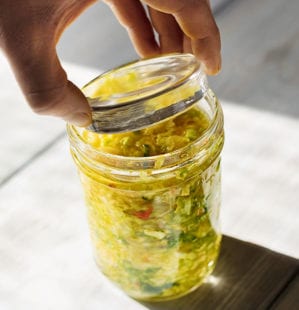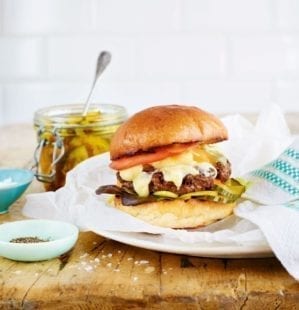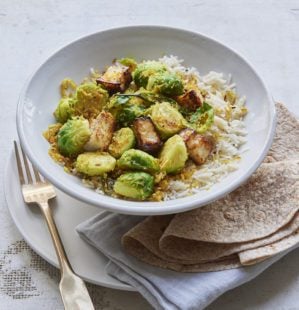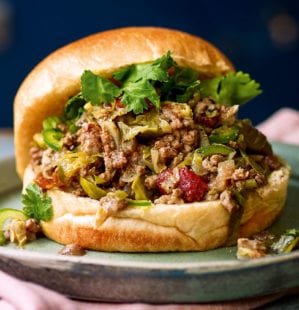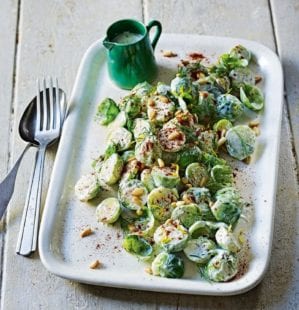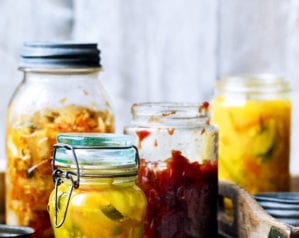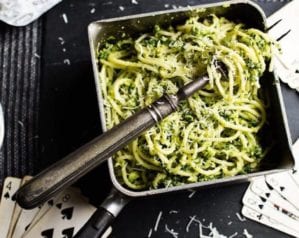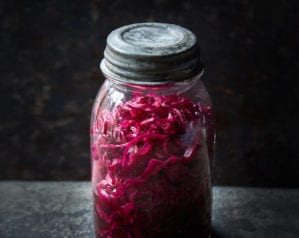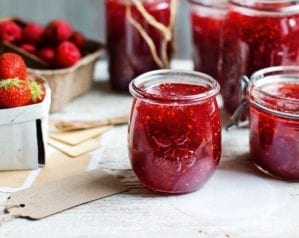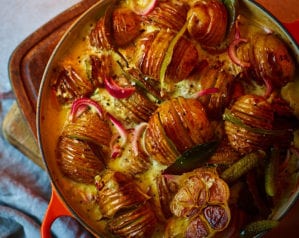
Sprout ’kraut
- Published: 4 Jan 24
- Updated: 18 Mar 24
Enjoy sprouts year-round with this funky sprout sauerkraut with pink peppercorns. Fermenting can sound daunting because of the bacteria, but the salt will kill off anything harmful, leaving the good guys to get to work. It’s great in a grilled cheese sandwich or with sausages or pork chops.
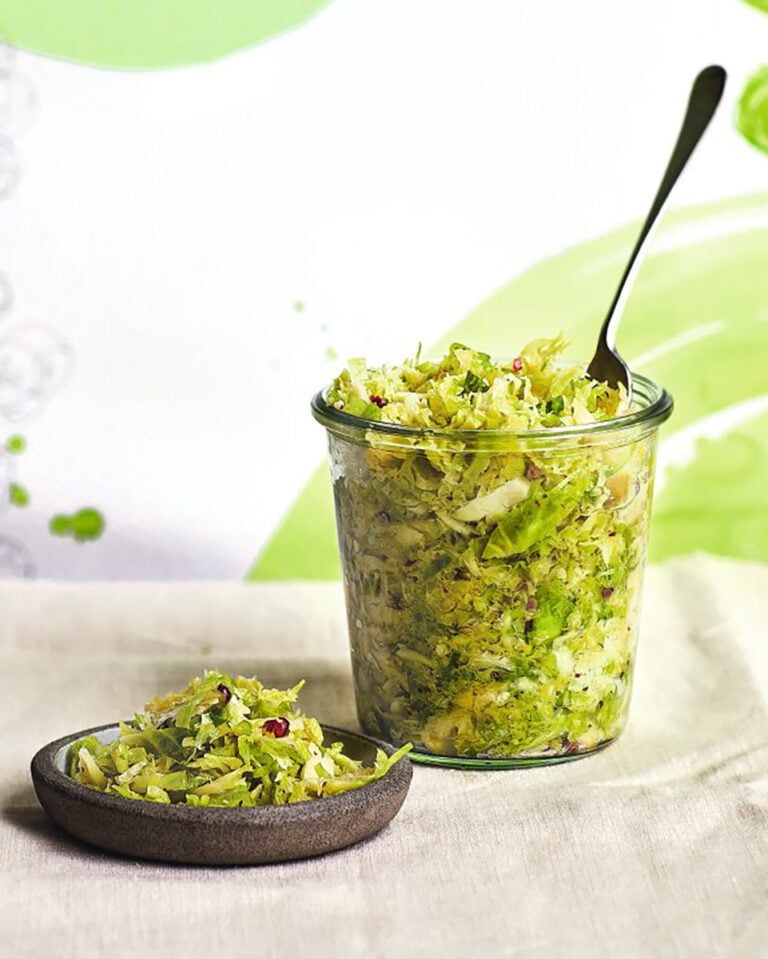
Loved this? Try smoky kale and carrot ‘kraut next…
-
Makes 1 x 500g jar
-
Hands-on time 15 min, plus 30 min resting and at least 2 weeks fermenting
Ingredients
- 500g brussels sprouts
- 2 tsp sea salt flakes (see Know-how)
- 2 tsp pink peppercorns
Specialist kit
- 500g sterilised preserving jar
Method
- Discard any damaged or discoloured leaves from the sprouts, then wash them well. Drain thoroughly, finely shred, then transfer to a large bowl. Sprinkle with the sea salt flakes, then scrunch and squeeze the leaves using your hands for 5 minutes (use plastic gloves if you have sensitive skin). This releases the moisture from the leaves (encouraged by the salt) and provides the fermenting liquid. Cover and leave at room temperature for 30 minutes to let the salt get to work.
- Roughly grind the pink peppercorns, mix them into the sprouts, then transfer the mixture to your sterilised jar, including all the liquid that’s accumulated. Pack the leaves down tightly. Ideally, the liquid should be higher than the leaves to protect the ’kraut from oxygen, but after a couple of days the leaves should have wilted and sunk below the liquid naturally so don’t worry too much at this stage. Cover the top with a circle of baking paper, then close the lid and leave at room temperature. The hotter the room, the quicker the fermentation process – if the ’kraut is left in a cold pantry, it will take longer to ferment.
- After a few days, you should see little bubbles – this shows the fermentation is working and the jar needs ‘burping’ to allow built-up gas to escape. Briefly open, then reseal the jar every few days. The ’kraut is ready to eat from 2 weeks but, if left, the flavour will continue to develop so taste as you go. Once you’re happy with the flavour, store the ’kraut in the fridge to prevent further fermentation.
- Recipe from January 2024 Issue
Nutrition
- Calories
- 8kcals
- Fat
- 0g
- Protein
- 0.5g
- Carbohydrates
- 0.6g (0.5g sugars)
- Fibre
- 0.6g
- Salt
- 0.3g
delicious. tips
As with a lot of ferments, the longer you leave it to do its thing, the more the flavour will develop. Shorter ferments (2-4 weeks) will have a fresher flavour with a crunchier texture, while longer fermenting gives funkier, deeper flavours and a softer texture. Both are great – it’s all about personal preference. Taste every week to learn how the flavour develops and find out how you like it.
Using good quality sea salt flakes is important – don’t be tempted to use fine or table salt as the ’kraut will end up far too salty.
Buy ingredients online
Rate & review
Rate
Reviews
Subscribe to our magazine
Food stories, skills and tested recipes, straight to your door... Enjoy 5 issues for just £5 with our special introductory offer.
Subscribe
Unleash your inner chef
Looking for inspiration? Receive the latest recipes with our newsletter

